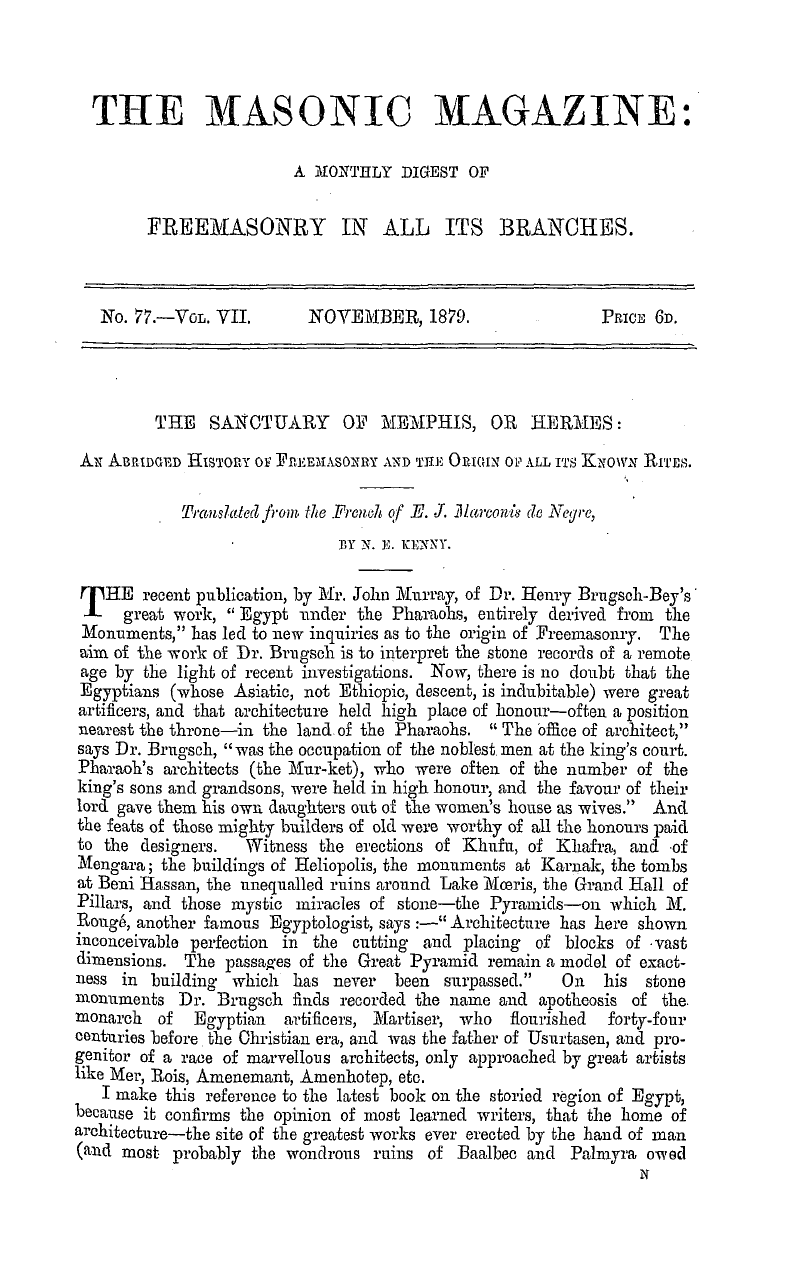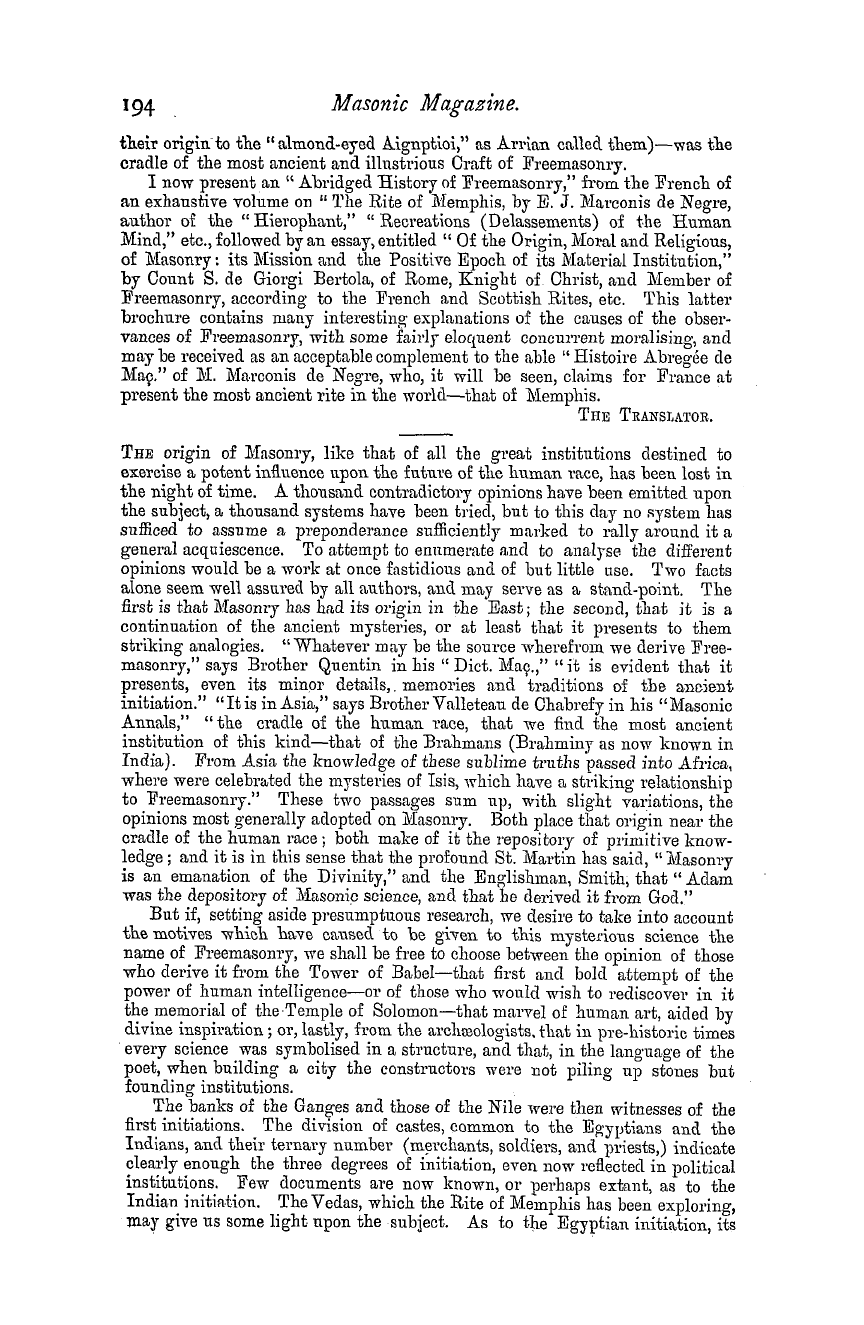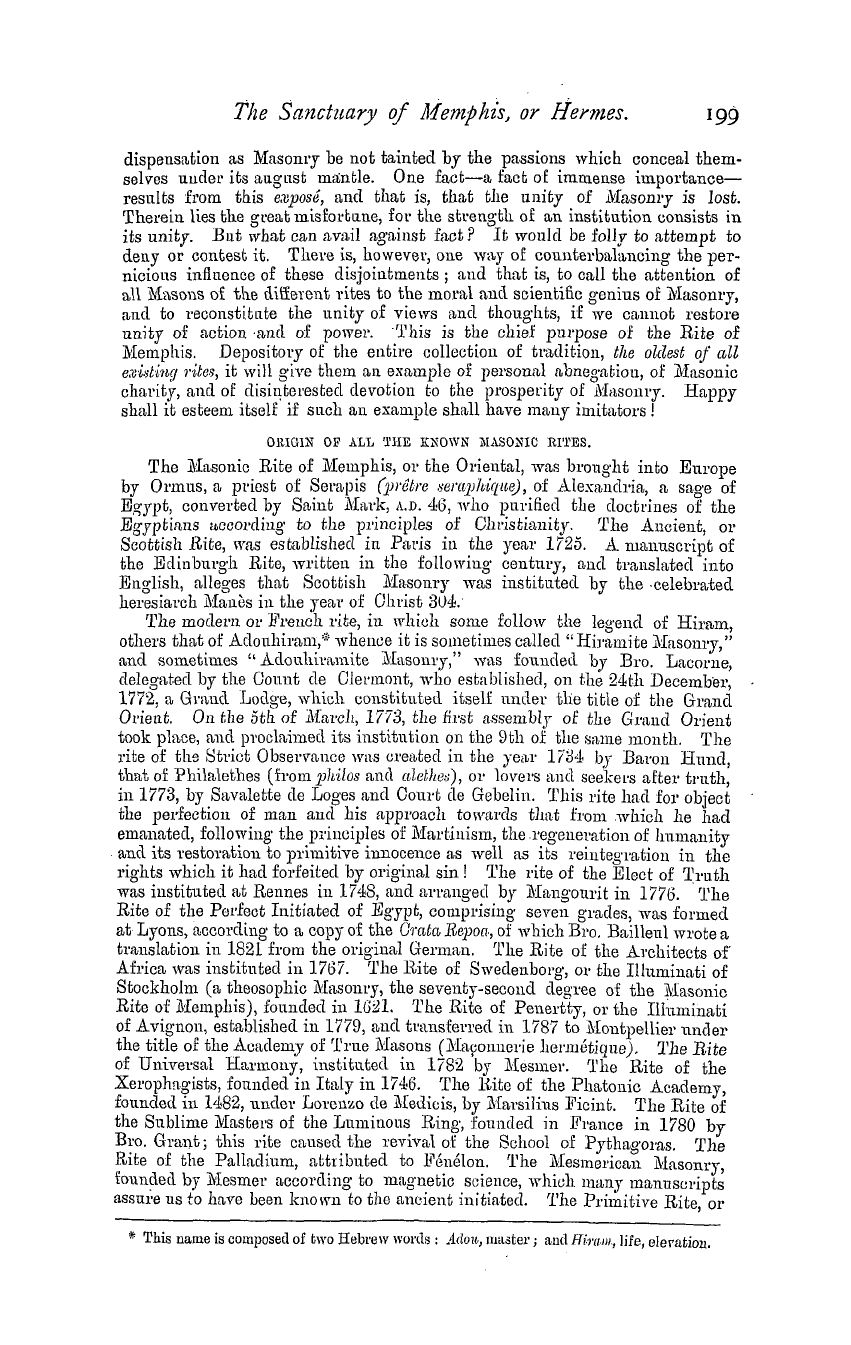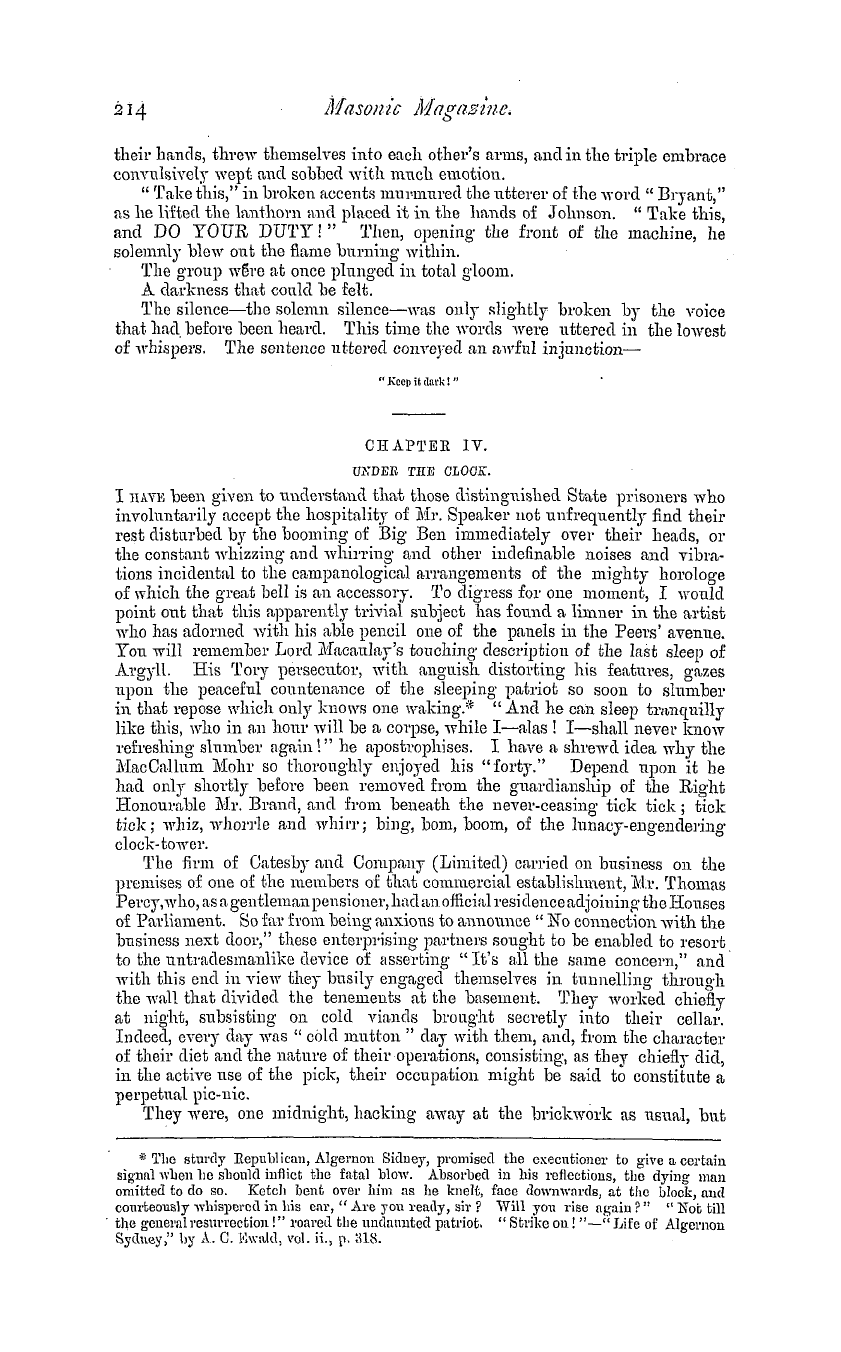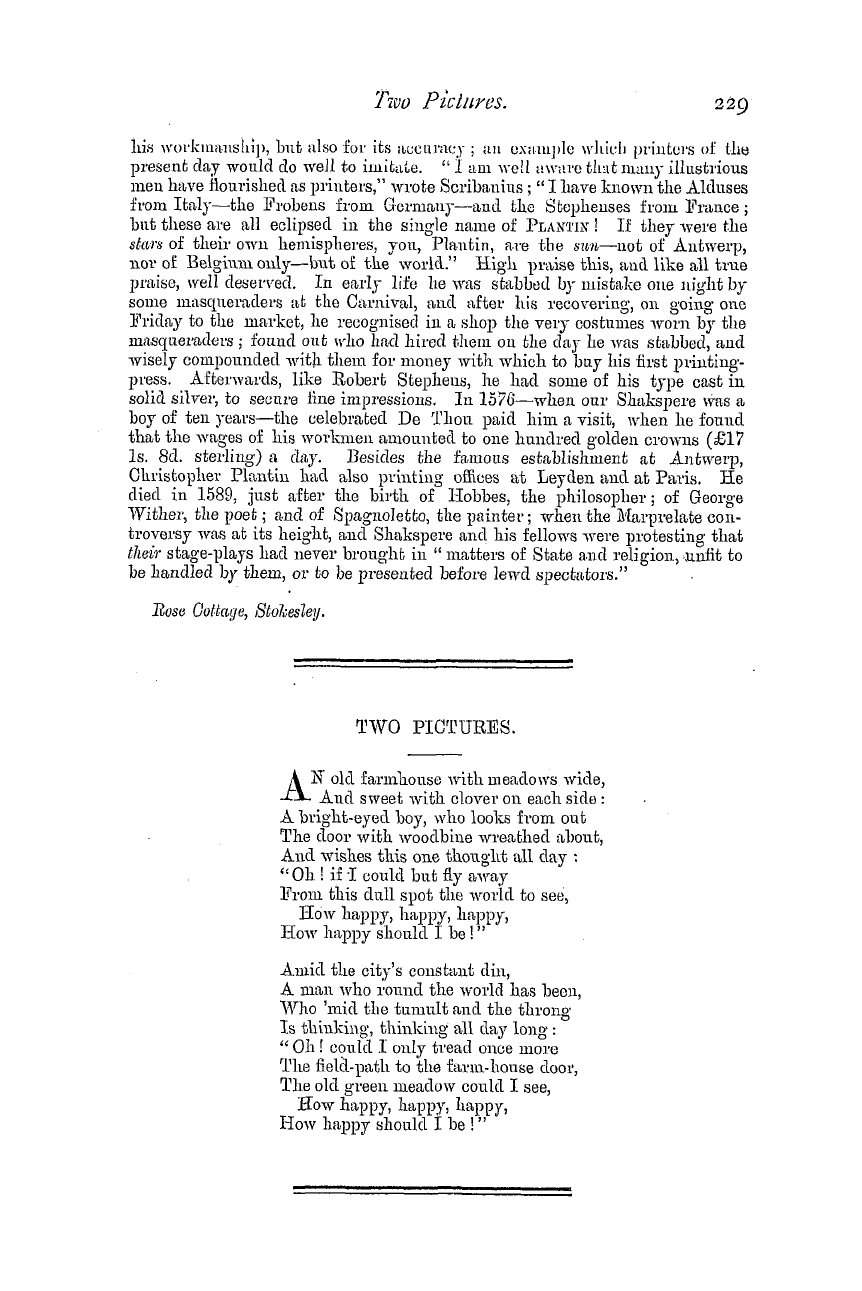-
Articles/Ads
Article JOTTINGS AT HIGH XII. IN THE HOLY LAND. ← Page 2 of 3 →
Note: This text has been automatically extracted via Optical Character Recognition (OCR) software.
Jottings At High Xii. In The Holy Land.
Although the numerous references to iron prove that it was a well-known metal in the days of the Hebrew nation , yet the art of hardening it into steel was unknown . In all the varied professions of which the architect Hiram was the expert , therefore , the metal bronze was essential . It is difficult to conceive any great erections in those distant agesbefore the discoA'ery of steelwithout the aid of
, , this alloy of copper ancl tin . Nature herself had suggested it in the tin pyrites , which is—copper , 29 ; tin , 27 . Copper was one of the six primitive metals first found in the island of Cyprus , from whence its name ( cupressus , copper ) . At present one-seventeenth of all the copper mined annuall y is procured in the United States . The ancients contrived to get great uses out of bronze . With a sort of pick-axe ( for chisels ivere not and are not knoAvn in the East ,
therefore the Mark Master ' s Tracing Board is in error on that subject , ) all these wonderful Avorks were wrought . The marvellous polish of porphyry ancl Syenite granite , Avhich can scarcely be imitated with modern tools , was probably executed by driving jets of fine desert sand against it from air machines . It was an imitation of nature ; the winds of the desert in this way polished the hardest of stone . Recently Mr . Tilgham , of Philadelphia , Pa ., has restored this Egyptian process , ancl applied it to the cutting of glass ancl stone surfaces with marked success .
The lime of this country is an excellent article , and makes an adhesive and durable cement . The Bible expression " as the burnings of lime " ( Isaiah xxxiii ., 12 ) needs no comment to any one who has seen a lime kiln here . I observed one on my way from Damascus to Beyrout , and was struck with the fact that in the scarcit y of wood the kiln was supplied by bundles of thorn bushes , cuttings of A'ines , and ( as some writers say ) even dried weeds ancl grass . In Smith ' s "History of Greece" are some interesting details of the statue
of the Olympian Zeus , which was reckoned as the masterpiece of Phidias . The idea lie embodied in it was that of the supreme duty ( sic ) of the Hellenic nation , enthroned as a conqueror , in perfect majesty and repose , ancl ruling the subject world with a nod . The statue was fort y feet high , and stood on a pedestal of twelve feet . The throne ivas of cedar wood , profusely adorned Avith ii'oryebonygoldgemsancl colours . The statue held in his riht hand
, , , , g the small ivory and gold image of I'ietory , and in his left a sceptre , ornamented ivith all sorts of metals and surmounted Avith an eagle . The robe and sandals Avere of gold . It was finished about B . C . 457 . As to the almost total destruction of so much of the ancient buildings in this country , it is remarked that the site of a great city in ruins in Palestine may he distinguished from a small toAvn or village by the quantity of hewn stone l
ying about the open pits , the deeps wells , and vast cisterns . The native stone is friable ancl easily turns to earth , which explains the accumulation of debris from thirt y to one hundred feet deep around the base of Mount Moriah . The ornamentation of ancient buildings is beautiful . At Gebal I observed an elegant specimen of the zigzag , a decoration characteristic of the Norman st yle of architecture , consisting of one or more mouldings running in zigzaohuesIt
. will repay a visitor there to look it up and copy it . The walls of ancient cities were immensely thick aud strong . A reliable traveller was told b y an Arab Sheik that he had galloped his horse on the top of the walls of Nineveh , made of sun-dried bricks 2 , 000 years exposed to time and human spoilers . The wall is yet forty feet hi gh and fort y feet at base , J -he present Avail of Jerusalem rises to the average height of fort y feet , and is massive and strong .
Ths perfection ivith which the great stones at Baalbec and other places were laid so closely , end for end in the walls , is wonderful . It is so of the niasonvy in the citadel of Pergamos , Asia Minor ; the stones are so admirabl y . joined together that a needle can scarcely be inserted between them . Of the ° niple of Cybcle , near Sardis , Asia Minor , two great columns of marble p
Note: This text has been automatically extracted via Optical Character Recognition (OCR) software.
Jottings At High Xii. In The Holy Land.
Although the numerous references to iron prove that it was a well-known metal in the days of the Hebrew nation , yet the art of hardening it into steel was unknown . In all the varied professions of which the architect Hiram was the expert , therefore , the metal bronze was essential . It is difficult to conceive any great erections in those distant agesbefore the discoA'ery of steelwithout the aid of
, , this alloy of copper ancl tin . Nature herself had suggested it in the tin pyrites , which is—copper , 29 ; tin , 27 . Copper was one of the six primitive metals first found in the island of Cyprus , from whence its name ( cupressus , copper ) . At present one-seventeenth of all the copper mined annuall y is procured in the United States . The ancients contrived to get great uses out of bronze . With a sort of pick-axe ( for chisels ivere not and are not knoAvn in the East ,
therefore the Mark Master ' s Tracing Board is in error on that subject , ) all these wonderful Avorks were wrought . The marvellous polish of porphyry ancl Syenite granite , Avhich can scarcely be imitated with modern tools , was probably executed by driving jets of fine desert sand against it from air machines . It was an imitation of nature ; the winds of the desert in this way polished the hardest of stone . Recently Mr . Tilgham , of Philadelphia , Pa ., has restored this Egyptian process , ancl applied it to the cutting of glass ancl stone surfaces with marked success .
The lime of this country is an excellent article , and makes an adhesive and durable cement . The Bible expression " as the burnings of lime " ( Isaiah xxxiii ., 12 ) needs no comment to any one who has seen a lime kiln here . I observed one on my way from Damascus to Beyrout , and was struck with the fact that in the scarcit y of wood the kiln was supplied by bundles of thorn bushes , cuttings of A'ines , and ( as some writers say ) even dried weeds ancl grass . In Smith ' s "History of Greece" are some interesting details of the statue
of the Olympian Zeus , which was reckoned as the masterpiece of Phidias . The idea lie embodied in it was that of the supreme duty ( sic ) of the Hellenic nation , enthroned as a conqueror , in perfect majesty and repose , ancl ruling the subject world with a nod . The statue was fort y feet high , and stood on a pedestal of twelve feet . The throne ivas of cedar wood , profusely adorned Avith ii'oryebonygoldgemsancl colours . The statue held in his riht hand
, , , , g the small ivory and gold image of I'ietory , and in his left a sceptre , ornamented ivith all sorts of metals and surmounted Avith an eagle . The robe and sandals Avere of gold . It was finished about B . C . 457 . As to the almost total destruction of so much of the ancient buildings in this country , it is remarked that the site of a great city in ruins in Palestine may he distinguished from a small toAvn or village by the quantity of hewn stone l
ying about the open pits , the deeps wells , and vast cisterns . The native stone is friable ancl easily turns to earth , which explains the accumulation of debris from thirt y to one hundred feet deep around the base of Mount Moriah . The ornamentation of ancient buildings is beautiful . At Gebal I observed an elegant specimen of the zigzag , a decoration characteristic of the Norman st yle of architecture , consisting of one or more mouldings running in zigzaohuesIt
. will repay a visitor there to look it up and copy it . The walls of ancient cities were immensely thick aud strong . A reliable traveller was told b y an Arab Sheik that he had galloped his horse on the top of the walls of Nineveh , made of sun-dried bricks 2 , 000 years exposed to time and human spoilers . The wall is yet forty feet hi gh and fort y feet at base , J -he present Avail of Jerusalem rises to the average height of fort y feet , and is massive and strong .
Ths perfection ivith which the great stones at Baalbec and other places were laid so closely , end for end in the walls , is wonderful . It is so of the niasonvy in the citadel of Pergamos , Asia Minor ; the stones are so admirabl y . joined together that a needle can scarcely be inserted between them . Of the ° niple of Cybcle , near Sardis , Asia Minor , two great columns of marble p
